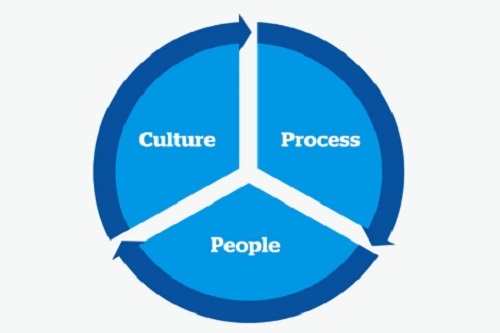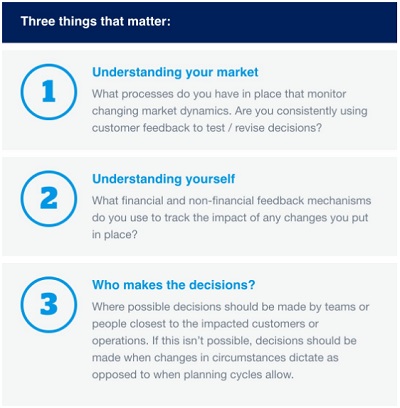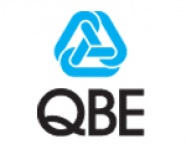Agility and adaptability – the keys to success

Authored by QBE UK Insurance Executive Director Cécile Fresneau
Few among us will miss 2020 but there were positives and big points of learning which could help us build more certain futures. When it comes to business, one of the biggest lessons last year was the importance of agility and adaptability. Being able to quickly think, understand and react to changing market conditions was make or break for many companies and with uncertainty set to continue into the new year, becoming more nimble should be on every business’s resolution list. In this article, we look at how your culture, people and processes can become more agile and what steps you can take now to help you weather future storms.
Adapt, change and repeat
A high degree of organisational agility helps your company process new information and react successfully to changes in customer behaviours, manufacturing and/or operating capabilities, and supply chain availability. Within your business, it’s about how quickly you, your people and processes can adapt and externally it’s about how flexibly you can interact with the wider market.
Be Four basics to creating an agile culture
1. Lead; don’t micro-manage
Be clear about the direction you want your business to go in, the main levers to get there and put guiderails or boundaries in place that allow your people flexibility in how they deliver your goals.
2. Keep everyone up to date, all the time
Everyone in your business needs to be up to speed on any changing market dynamics and evolving plans. Even if there is no new or unclear information, it’s important for leaders to communicate that message with teams as well as elicit their ideas and views. Bottlenecks and barriers need to be understood early so they can be dealt with quickly. This allows decisions to be made where they matter most, at the coalface.
3. Don’t get distracted
Maintaining focus on the task at hand creates an important sense of stability, which in turn helps your people focus in uncertain times.
4. Avoid blame
Things will inevitably go wrong at some point. What matters is quickly spotting when something doesn’t work, figuring out why and making the necessary changes
Don’t let process get in the way
Your processes and systems should support (or at the very least not hinder) rapidly adapting priorities to changing conditions. Critical to making this happen is building a more continuous monitoring and decision-making process.
Techniques for delivering change in uncertain times are covered in Planning and executing in periods of uncertainty:
https://youtalk-insurance.com/news/qbe-insurance/planning-and-executing-in-periods-of-uncertainty

People make the difference
The opportunities and challenges of a quick paced, ambiguous environment are not for everybody. Whether you are looking to build agility into specific teams or rolling out agile approaches more broadly, identifying people with the right mindset and skills is a critical step.
So is developing those people. Some approaches you could consider are:
• peer-to-peer training
• agile mentors
• encouraging agile values and principles in your business by:
• using practical examples to show how agile working can benefit your people and your business
• changing some work practices around projects for example
• reviewing incentive structures
• developing networking opportunities within and outside your industry to broaden thinking
Building organisational agility is a long-term process that requires serious leadership commitment and alignment across many parts of a business.
Building a “Skunkworks” and three other things you can do now
Building organisational agility is a long-term process that requires serious leadership commitment and alignment across many parts of a business. That said, there are a number of things you can do now to start the process and feel the benefit.
1. Build a “Skunkworks”
Do you have particularly challenging strategic or operational problem to resolve? Gather together a small group of people, preferably with different skills and backgrounds but ideally with an ability to think outside of the box and get them to solve the problem. The beauty of a skunkworks is that the team can focus on a single challenging issue, without introducing risk into the rest of your operation.
2. Reduce the noise and improve information
While there is rarely a shortage of market or performance data in modern businesses, truly insightful and actionable information is scarce commodity. Building a robust, yet focused, set of market and performance information is critical to empowering teams to make decisions and move forward. Understanding the metrics that matter helps align focus and provides the guiderails needed in an agile environment.
3. Empower your teams… but give them a safety net
One of the main characteristics of an agile organisation is empowering teams closest to the action to make decisions. While this can be uncomfortable for both leaders and teams not used to this way of operating, building sufficient checks and balances into the process can ease the transition. This can take the form of thresholds that are gradually eased, new management information or even peer review and coaching.
4. Look outside your organisation
Building organisational agility doesn’t stop at your company’s walls. Adapting your organisation to the changing environment requires a holistic view of your distribution networks, supply chain and manufacturing capabilities for example. Building flexibility and resilience into these elements can be one of the most straight forward ways of improving your organisation’s ability to adapt to changing market conditions.
For tips on how to keep the cash coming in, read Building financial resilience:
https://youtalk-insurance.com/news/qbe-insurance/how-to-build-financial-resilience
Lessons from a crisis
Covid-19 was an unprecedented shock to the global economy last year. But uncertainty isn’t new. Before coronavirus we were already in the middle of a period of heightened uncertainty and the issues that were driving it have not gone away. We’ve just been distracted by something more prolific.
Whether it is the lasting impacts of “home working”, the impacts of Brexit, wider geopolitical uncertainty or the responses to climate change, these will all continue to be uncertainties that businesses need to consider as we chart the path ahead.
This leaves us with three lasting lessons from this period to take forward.
About QBE
QBE European Operations is part of QBE Insurance Group, one of the world’s leading international insurers and reinsurers and Standard & Poor’s A+ rated. Listed on the Australian Securities Exchange, QBE’s gross written premium for the year ended 31 December 2018 was US$13.7 billion.
As a business insurance specialist, QBE European Operations offers a range of insurance products from the standard suite of property, casualty and motor to the specialist financial lines, marine and energy. All are tailored to the individual needs of our small, medium and large client base.
We understand the crucial role that effective risk management plays in all organisations and work hard to understand our clients’ businesses so that we offer insurance solutions that meet their needs – from complex programmes to simpler e-trading solutions – and support them in minimising their risk exposures. Our expert risk management and rehabilitation practitioners focus on helping clients improve their risk management so that they may benefit from a reduction in claims frequency and costs.

